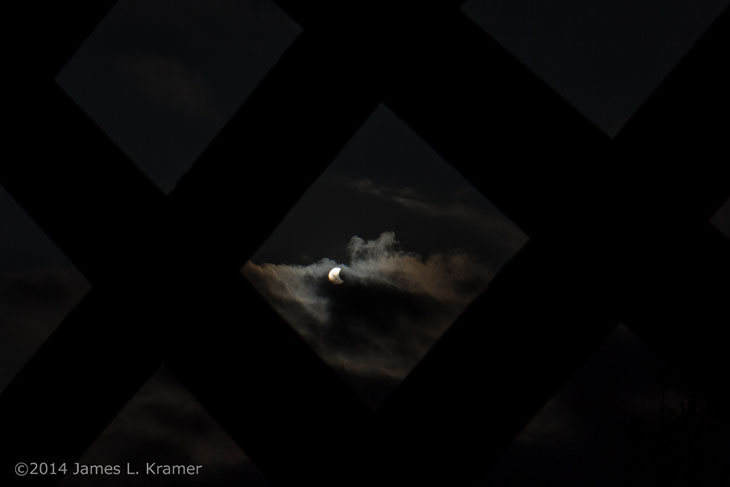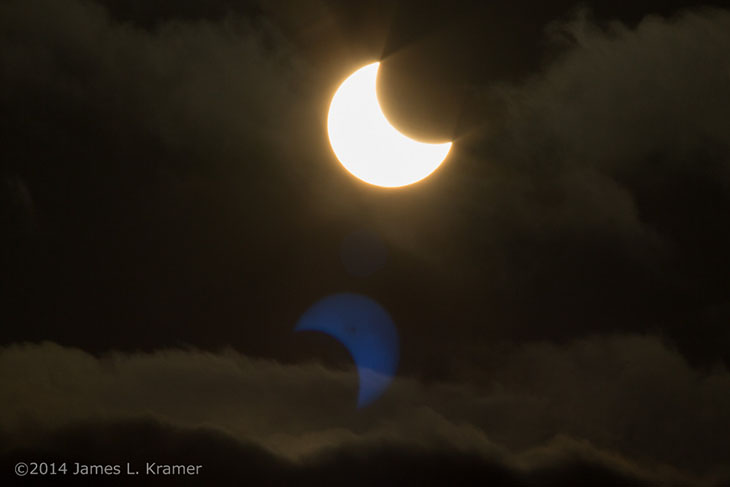
I was aware of the impending partial solar eclipse, and even dug out some materials that might potentially assist in getting images, but failed miserably, on two fronts. The first was, what I had to help cut the glaring light from the sun down a manageable level for photos would only work if the light was already reduced, for instance by thin clouds or late in the day with a heavy dose of atmospheric haze, neither of which came to pass in my area. The second was, I apparently misinterpreted the time that it would appear here, and every time I checked I saw a complete sun. I gotta pick better sources of info…
Jim over at the Kansas branch, however, got conditions much like I had for the transit of Venus a few years ago (another here,) and was able to snag a few images due to the thin clouds that filtered the light a bit. While a proper solar filter is able to produce a more detailed image, there’s something to be said about the mood and tempestuous nature of using the clouds in this manner.

The reason these appear more like a lunar eclipse is that the sun, even through the clouds, is magnitudes brighter than the surrounding sky, able to overexpose itself by a ridiculous margin to become a featureless giant blob, should the sky be realistically rendered. So, despite these being taken in late afternoon, the exposure had to be reduced to near-darkness to keep the features of the solar disc.

And even then, the light can easily swamp all of those fancy things camera manufacturers do to control unwanted optical effects in the image, and thus at times, glare and internal reflections can still come through. What I’m most curious about is the ‘keyhole’ nature of the glare around the points (what astronomers call “limbs”) of the sun. I would have thought that the glare would be pretty evenly distributed, so I can’t explain why there are distinct anti-crepuscular rays, like reverse spotlights, coming off of those points.
But Jim has a favorite, and I can’t fault his taste because it’s mine too:

Yes, those are sunspots appearing towards the center of the sun, since there is some prominent activity* going on right now, and Jim managed to capture it during a cooperative pass of thicker clouds. The same activity is producing nice aurora borealis (and australis) shows at the higher latitudes, something I’m dying to capture someday but also quite reluctant about as well, since I don’t like bitter cold and that’s pretty much what you have to endure to see the best auroral displays. I saw some very restrained effects in central New York a couple of times, but nothing at all impressive; the colorful stuff happens much closer to the arctic and antarctic circles.
I need to point out something else, too. Go back up to the previous image with the glare and internal reflection, and look closely at that reflection – the sunspot is visible there as well, even though it’s blown out overexposed in the sun itself.
Be sure to check out Jim’s pics of the previous eclipse, too. And the lunar eclipse from earlier this year, with a follow-up sequence.
* You see what I did there? Sunspots are regions of intense magnetic activity that frequently result in solar prominences, those big arcs of fire seen in images from NASA, so “prominent activity” has a double meaning. I know you’re impressed even though you’ll never admit it…




















































